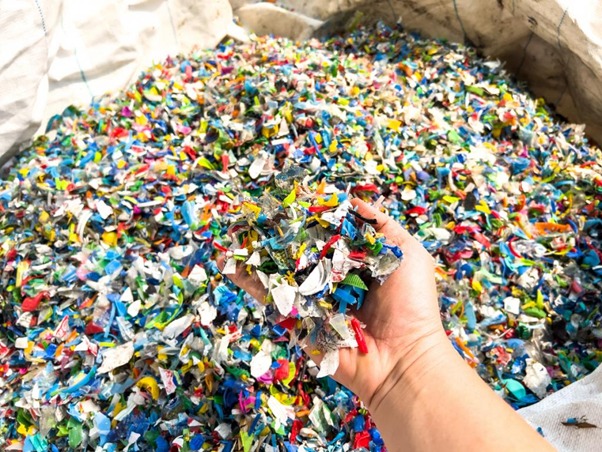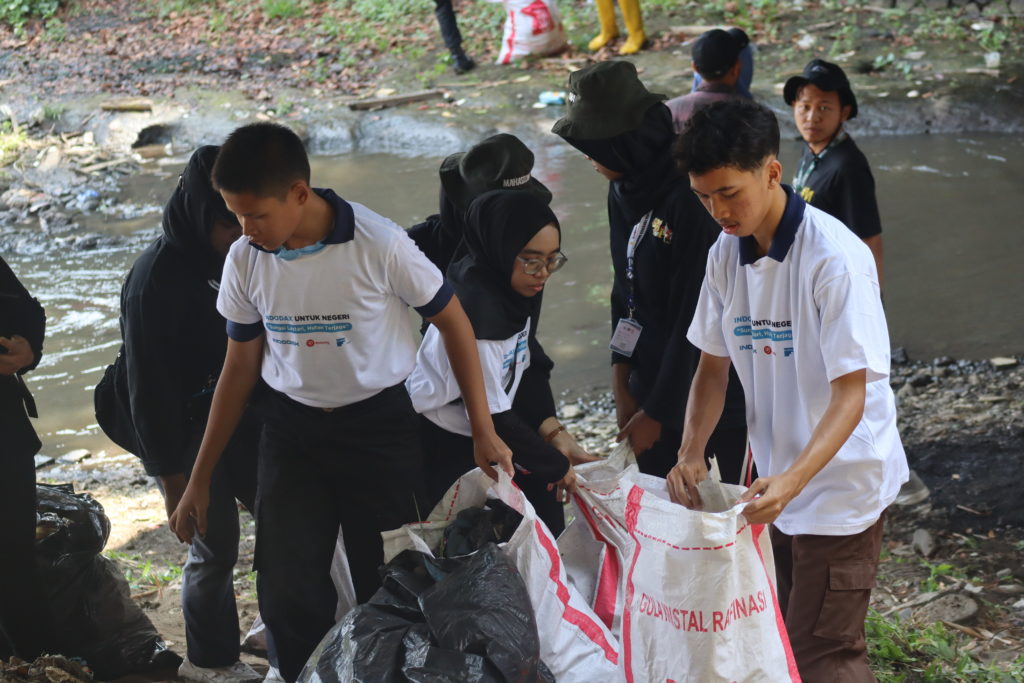AVOID EATING PLASTICS THIS EARTH DAY
Recycling was once considered the ideal solution for the excessive amount of plastic produced every year. However, this is no longer feasible. The global recycling capacity is unable to keep pace with the rate at which natural resources are being used, created, and wasted.

Pieces of recycled plastic | Foto: iStock
Earth Day is an annual celebration that takes place on April 22nd, with over one billion people advocating for the planet and the health of all living things. There are countless ways to get involved, from participating in the Great Global Clean Up to supporting calls for climate education in schools and signing the Global Plastic Treaty.
EARTHDAY.ORG, the organization responsible for the first Earth Day 54 years ago, sets the yearly celebration theme. This year’s theme is “Planet vs. Plastics,” emphasizing the global commitment to tackle the plastic crisis head-on. The goal is to achieve a bold 60% reduction in plastic production by 2040 and strive for a plastic-free future because recycling alone is not sufficient.
Plastic pollution harms our planet, and its production produces greenhouse gases (GHGs) that contribute to climate change. According to a study cited by UNEP (2018), one-third of all plastic waste ends up in soils or freshwater. Most of this plastic disintegrates into particles smaller than five millimetres, known as microplastics, which further break down into nanoparticles (less than 0.1 micrometres in size). We inhale and ingest these tiny particles and toxic chemicals leaching out of them. The vast majority of plastic is never recycled and instead contributes to an enormous waste crisis while also killing wildlife.
Currently, the manufacture of plastics accounts for 4% of GHG emissions and will triple by 2060 if we continue along our present plastic-producing trajectory. Plastics are made from oil and are, therefore, part of the fossil fuel industry. Our appetite for plastics fuels the growing demand for petrochemical products, according to the International Energy Agency. Even as we attempt to curb fossil fuel use in sectors such as transportation and heating, plastic consumption will only increase based on our current trajectory. The Center for International Environmental Law (CIEL) estimates that if trends continue, plastics will account for 20% of oil consumption by 2050.
Open burning of waste is common in many parts of the world and is a significant source of air pollution. Burning plastics releases a cocktail of poisonous chemicals that damage the health of the planet and the people exposed to the polluted air. Black carbon is one such serious pollutant – it has a global warming potential up to 5,000 times greater than carbon dioxide. Naturally, sunlight and heat cause it to release methane and ethylene – and at an increasing rate as the plastic breaks down into ever smaller pieces.
Moreover, research shows that microplastics impair the ability of marine microorganisms to absorb carbon dioxide and release oxygen. The ocean produces at least half of Earth’s oxygen, primarily through plankton. These tiny organisms also capture carbon through photosynthesis, making our ocean a vitally important carbon sink. Microplastics harm the ability of these organisms to grow, reproduce and capture carbon. By grazing on microplastics, this plankton could further accelerate the loss of ocean oxygen.
Recycling can still be useful
Recycling can still be helpful. Not all plastics can be reused, especially medical devices. When all other options have been exhausted, recycling keeps the material in the economy and temporarily delays the need for more virgin plastic. However, the existence of recycling should not justify producing more plastic.
Recycling must not cause pollution. Manufacturers should only produce plastics that can be recycled using methods proven to be safe and clean while banning toxic additives. Simple labelling can assist consumers in making informed decisions about how, where, and what to reuse or recycle, which can help prevent recycling loads from becoming contaminated with non-recyclable waste and toxins.
Plastics sent for recycling should be treated in the most socially and environmentally responsible manner possible. High-income countries that export waste to poorer countries for cheap recycling do so without any guarantees that infrastructure exists to manage this waste where it ends up. The result is waste leaking into the environment and toxic plastic blocking drainage channels and causing floods. Some of this waste is burned outdoors, which comes with risks to health and the environment. Banning or restricting exports would be beneficial.
The informal waste sector employs precarious workers who collect, sort, and sell recyclable materials and perform 60% of global recycling. Waste reclaimers endure poor health and low pay, but their in-depth knowledge is invaluable and must be acknowledged. Policies are required to safeguard their rights and improve their livelihoods.

Training on Plastic Waste Management into Handicrafts| Photo: Filantra Documentation
What Can We Do?

River Conservation from Plastic Waste | Photo: Filantra Documentation
Reducing plastic consumption in daily life can seem like a daunting task, but there are some fairly simple steps you can take to make a big difference. Here are some practical tips to help reduce your plastic consumption:
- Bring reusable bags when shopping.
- Invest in a refillable water bottle.
- Avoid straws or bring your reusable ones.
- Choose products with less packaging.
- Avoid single-use plastics.
- Bring your containers for leftovers.
- Recycle properly.
By being mindful of our plastic consumption, we can positively impact the environment and help reduce plastic waste.
written by: Salman Nursiwan


